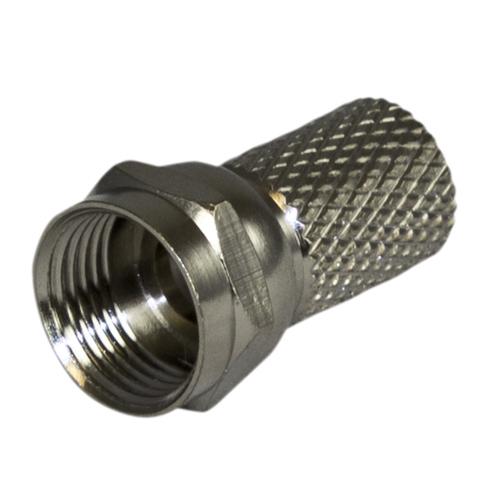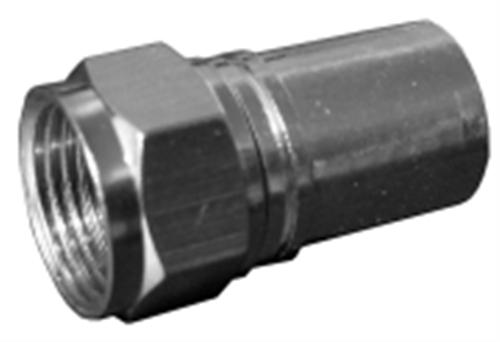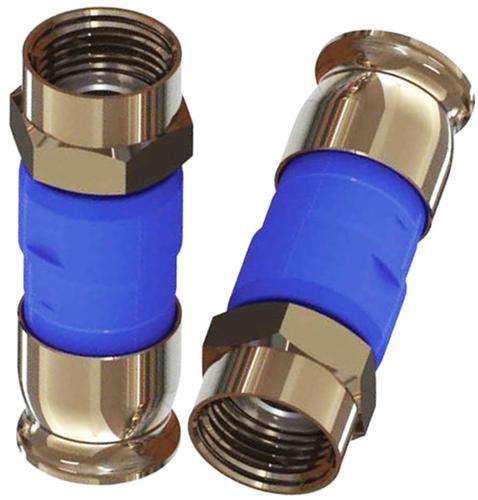The F Connector is the most common connection for video distribution. It’s the friendly chrome connection that lets you use your antenna, cable or satellite by letting you connect the cable to the box.

This is an F-connector attached to our Solid Signal cable.
F Connectors are found at the end of coaxial cables (read our series “Cables 101” for more) where they provide a secure, weatherproof seal that shields the connection from RF interference.
What’s so special about coaxial cable?
On coaxial cables, the center part of the cable is also used as part of the connector so it is important that the outer part of the connector properly shields it. That’s why push-on and crimp-on connections have fallen out of favor. Special compression tools are used to lock the connector onto the cable while making sure that the shielding on the outside of the cable isn’t broken.
Coaxial cables are very precisely defined. The name of the cable tells you a little bit more about whether or not it’s suitable for your application. RG59 cable is used over-the-air antenna installations. RG6 and RG6 Quad can be used for antenna, cellular, and satellite installs. RG11 is a special cable used only for longer runs.
It’s important to use the right cable to make sure that the signals that travel down the cable will come through nice and strong.
F connector types

F connectors come in three basic types: twist-on, crimp-on, and compression connectors. Twist-on connectors are generally only used for over-the air antennas.

Crimp-on connectors are rare today. They used a special tool to apply pressure to the connector. A properly-prepared crimp-on connector is one of the best connections you can get, but doing it right takes practice. Technicians today use compression connectors instead.

Compression connectors are also attached with a special tool that pushes the back end toward the front end for a super-tight seal. This sort of seal is the best for preserving signal and keeping water and dust out of the connector. Here’s a little more about that topic if you’re curious.
How to connect an F connector
In most cases, “finger tight” is good enough for F connectors. You never want to overtighten the connector because the connection inside can suffer. If anything, just an eighth of a turn past finger tight.
In cases where the connection is outside, a weather boot is used to give extra protection from the elements. This keeps corrosion from getting to the outside of the connection.
F-connectors attach with a 7/16″ (English) open end wrench so it’s a good idea to have one handy if you’re trying to disconnect an F connector. Because it’s a metal-on-metal connection, it can sometimes be hard to remove with just your hand alone.
Unlike other connectors like the RCA or BNC, the F connector is not named for its creator, nor is it named for its size or construction like the 1/8″ TRRS (commonly called the headphone plug.) It may have been named because it originally carried UHF or VHF signals to a TV.





